What is the current status of Bangladesh Studies?
Bangladesh Studies as a field is a relative newcomer in Western academia, compared to Indian Studies or even the more recent South Asian Studies. A case in point, the American Institute for Bangladesh Studies (AIBS) was founded in 1989, as opposed to the American Institute for Indian Studies in 1961 and the American Institute for Pakistan Studies in 1973. Scholarship on what in 1971 became Bangladesh is, of course, not new. But in order for a field of study to be named as such and to enjoy visibility as a field, there has to be a critical mass of scholars who see themselves as contributing to the field as well as organisations, journals, awards that carry the name and help to define the field.
There have been important developments in that direction in the US in recent years, both in terms of institutions and in the expansion of the field. Just to list some institutional milestones: Journal of Bangladesh Studies (JBS) was first published in 1999 by Bangladesh Development Initiative (BDI), a non-profit professional association of Bangladeshi academics and researchers in the US and the Subir and Malini Chowdhury Center for Bangladesh Studies was established in 2014 at the University of California, Berkeley. Both JBS and the Chowdhury Center now define "Bangladesh Studies" in the broadest possible terms, both historically (to include topics to do with the region that became the independent nation of Bangladesh in 1971) and transnationally (to include topics pertaining to people who have traveled forth from this region, its different diasporas, comparative studies, etc.). In other words, this means that Bangladesh studies should not be bounded temporally by the year 1971 nor should it be delimited geographically by the borders of the nation-state of Bangladesh.
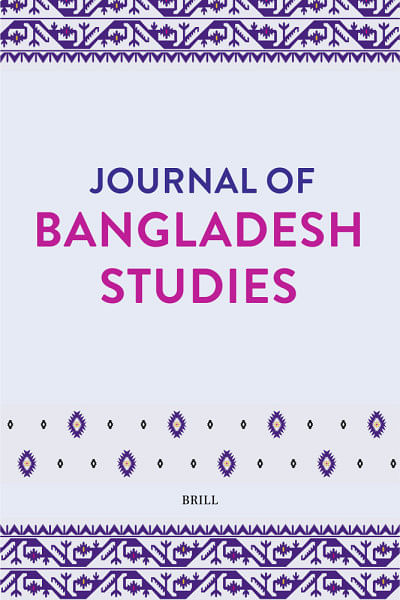
Such an understanding of Bangladesh studies as a field is markedly different from what Bangladesh scholarship was in the first decades following independence. As we know, right after the Liberation War, the country faced so many urgent problems that the main trend was scholarship that addressed immediate developmental issues and had very clear policy implications. There have, of course, always been historians, archaeologists, art historians, and literary scholars of the region, but in the early years of independent Bangladesh, domestic and international funding and accolades were directed primarily to economists, political scientists, food scientists, rural sociologists, demographers, and scholars of education, development, and public health.
In the 1990s, reflecting global, regional, and national shifts, donor attention turned to topics such as the threat of political Islam, NGOs, gender, civil society, and governance. As a result, much of the writing on Bangladesh during this period was produced for donors and NGOs, which meant that it was not always circulated broadly, and the knowledge generated was often of a specific kind and for a particular purpose.
Today, donors remain interested in certain topics, for example, migration and climate adaptation, but it is fair to say that over the last two decades, we have seen scholars in Bangladesh studies undertake a far greater variety of projects, use innovative theoretical approaches and methodologies, receive funding from a greater variety of sources, and publish in new and different venues—and that is very exciting.
Both JBS and the Chowdhury Center now define "Bangladesh Studies" in the broadest possible terms, both historically (to include topics to do with the region that became the independent nation of Bangladesh in 1971) and transnationally (to include topics pertaining to people who have traveled forth from this region, its different diasporas, comparative studies, etc.). In other words, this means that Bangladesh studies should not be bounded temporally by the year 1971 nor should it be delimited geographically by the borders of the nation-state of Bangladesh.
Not only is Bangladesh studies an academic field but it is also an intellectual community or network. Those of us in graduate school in the US a few decades ago were often the only Bangladesh scholar on a panel, perhaps even the only one at an entire disciplinary conference. In recent years, there have been all-Bangladesh panels not only at the annual Conference on South Asia in Madison, Wisconsin, but also at the National Women's Studies Association and the Association for Asian Studies and no doubt many others. We've also had broad-ranging, multidisciplinary, all-day symposia on Bangladesh topics at Madison, as well as multi-day conferences focused on Bangladesh organised by AIBS and BDI.
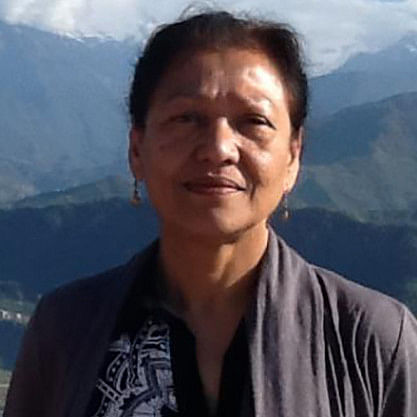
What are the most underexplored or emerging areas within Bangladesh Studies that hold significant potential for further research?
Bangladesh has undergone significant transformation in the last 30 years. It has urbanised a great deal, the rural areas have seen greater connection with towns and cities, Bangladeshis have migrated to both cities and abroad, with increased traffic between Bangladesh and other countries. Digital connectivity has increased and provided a sense of integration that was not present before. Education levels have increased, women across socio-economic backgrounds have become more visible in society and the economy, lifestyles have altered, as have expectations regarding rights and choices. While publications and media have proliferated in the country, only a small proportion of writing is in English and most of the English language publications on Bangladesh are by international (including Indian) and expatriate Bangladeshi academics. Bangladesh remains at a disadvantage compared to its South Asian neighbours in higher education and scholarly research and writing in English.
We are particularly excited about emerging scholarship that highlights connections between Bangladesh and other parts of Asia, both historically and today, and hope that this may help us forge stronger relationships with our neighbours and build a more promising future for our region. We also hope to see more intellectual inquiry that will examine different aspects and periods of our local history.
We are also eager to see what the greater freedom of information, post-July 2024, will mean for the study of politics and society. At this point, everyone eagerly awaits the changes that will unfold over the next few years. A social dialogue with the new political, economic, and social changes is imperative for Bangladesh to build a future in a meaningful way. We hope that JBS can have a role in an informed and critically engaged path forward.
Also, although a lot of English language writing on Bangladesh has concerned itself with policy, we find more young scholars being interested in subjects that do not necessarily lend themselves directly to policy-making—history, anthropology, rhetoric, film, among others. We want to encourage these new scholars to join the academic community that comprises JBS and enable creative ideas and writing to be born out of the fertility that a multidisciplinary platform allows.
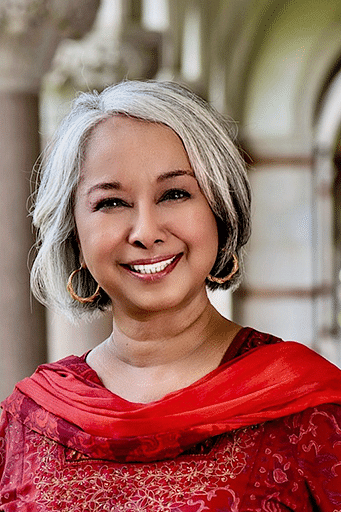
How important is interdisciplinary collaboration for the future of Bangladesh Studies?
While it is important to focus on and build disciplinary applications as they pertain to Bangladesh, in research endeavours everywhere, interdisciplinary collaboration allows us to better understand the nature of social change, problems, and prospects. Examples of this may be seen in environmental changes in Bangladesh. The flooding of rivers, for example, is well understood by geologists and geographers using a scientific lens, but the effect on—and of—the economy, migration, and human lives become visible when bringing in perspectives from anthropology, history, and politics. Solutions to flooding have to be provided by teams from all of these voices, and not only by engineers or technological experts.
What motivated the launch of the Journal of Bangladesh Studies?
Many journals published in Bangladesh, of course, highlight research on Bangladesh, but most are focused on specific disciplines, such as medicine, health, science, economics, agriculture, literature, and cinema. Few are dedicated to the social sciences and humanities broadly. The Journal of Bangladesh Studies fills that gap by being a high-quality outlet focusing on social science and humanities and being the only journal of its kind being published from the United States. Self-published by BDI for 25 years, the journal will be published by the venerable Dutch academic publishing house Brill starting in 2025.
The journal was initially launched by the organisation, Bangladesh Development Initiative, to study the economic development of Bangladesh. It was initially launched in the United States as a publication called "Thoughts and Initiatives" and then the name Journal of Bangladesh Studies was given by the founding editor Syed Saad Andaleeb. The journal was given its current structure under the editorship of Farida Khan and Associate Editor Rahim Quazi, with the current editorial board formed in 2020. This was updated in 2023 to include members from other countries who have studied and written on Bangladesh. The journal has updated its aims and scope. It is a double-blind peer-reviewed journal registered in the USA. The goal of JBS is to publish original, innovative, and multi-disciplinary research on Bangladesh, reaching a wide range of scholars in academic and research organisations, as well as other relevant institutions throughout the world.
We encourage articles from all disciplines of scholarship pertaining to the study of Bangladesh, the Bangladesh diaspora, or comparative studies in which Bangladesh is included. Our aim is to provide a platform for rigorous intellectual and academic research as well as studies that are practical and relevant to everyday solutions and policymaking. Articles should address Bangladesh's problems and prospects from theoretical, empirical, or analytical perspectives prevalent in academic disciplines. Articles must be grounded in theory, analysis, and referenced work, and be able to address readers beyond the specific disciplines they represent.
We are very happy that many of our manuscripts come from universities in Bangladesh, but for the reasons mentioned above, some of them require more rounds of revision and editing.
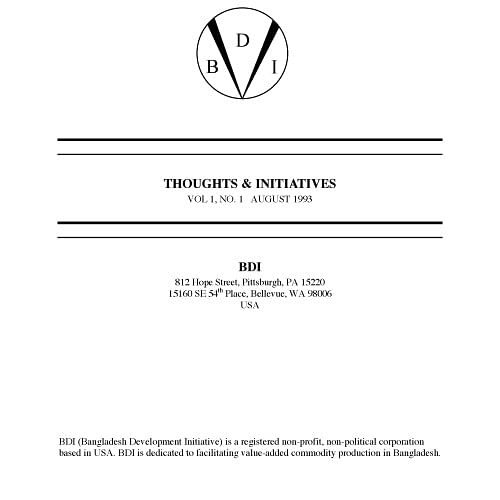
How do you select and evaluate submissions for final publication, and what challenges do you face in ensuring quality and relevance?
As in standard academic journals, the editor or associate editor first reviews a submission to see if it meets the basic requirements for further consideration. The submitted paper should be: 1) an original research document, 2) formatted according to the journal's style, 3) accessible to an educated reader of a multi-disciplinary journal, and 4) written in quality academic language with an error-free and engaging writing style. Papers are then sent to external reviewers with the help of our editorial board. There are usually two peer reviews of each manuscript and the review reports are sent to authors to guide their revision. Typically an average article needs one or two rounds of review and a few rounds of editorial changes.
We often have special issues to address new fields of research or topics that are currently of interest. For example, we have had a special issue during COVID-19 and its effects in Bangladesh. For this, we usually have members of the editorial board take on the role of a guest editor and rely on them to find a suitable co-editor from their scholarly networks if they wish.
The education sector needs to stay free of partisan politics as the emotions and violence related to such activity, if taken to an excess, can be detrimental to inquiry and considered thought. If there are significant changes to a unit, the students in that unit must be given utmost attention to ensure that their courses, projects, and curricular tracks stay in place so that they can complete them.
What advice would you give aspiring young researchers to succeed in their field?
When researchers are just starting out and are still students, we suggest that they might consider working with their professors or thesis advisors and publish with them. While this is not necessary in all cases, this strategy allows them to go through the various requirements for publishing articles and experience the path from starting a research project to seeing it completed and published. We recommend that research be presented at different stages so that comments and suggestions from other scholars can be incorporated if the author(s) thinks these are valuable. Learning to assess valuable suggestions can be a matter of time and experience.

With the ongoing changes in Bangladesh's education sector post-uprising, what steps should be taken to ensure universities can foster meaningful research?
To the extent possible, the education sector needs to stay free of partisan politics as the emotions and violence related to such activity, if taken to an excess, can be detrimental to inquiry and considered thought. If there are significant changes to a unit, the students in that unit must be given utmost attention to ensure that their courses, projects, and curricular tracks stay in place so that they can complete them. To the extent needed, technology can be used for communication and even learning if there are situations where it is unsafe to hold class or travel in person. There is no substitute for time spent on studying and learning. Scholarly work remains the same whether there has been an uprising or not.
As a policy matter, higher educational institutions need funding for research and university faculty must have time to work on research projects. How many faculty members are expected to teach can be a source of concern, as they require sufficient time to work on research.
How can Bangladesh Studies be promoted more effectively across the world?
Bangladesh Studies can be promoted through publications and research all around the world. Fortunately, there are Bangladeshi communities and individuals spread out all over the world. Whether it is in the UK, Malaysia, Dubai, or Italy, these communities have various concerns of their own, including their interaction and assimilation in that locality, and that with their place of origin. We want to include these concerns in our research on Bangladesh, as the diaspora must be included in that definition.
Therefore, we try to reach scholars around the world by involving them in our editorial board and relying on our publisher to reach these different regions of the world.
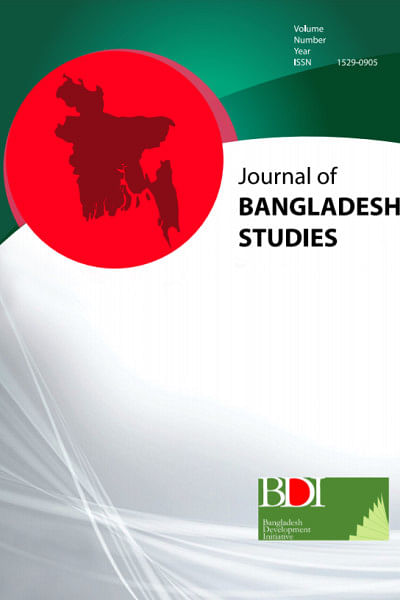
Bangladesh is lucky to have a large and spread-out diaspora, with many in academic and research fields. This allows more people to learn about the country and its heritage, generating more interest and scholarship. Many people do not know that Bangladesh is the eighth most populous country in the world. Our aim is to make writing on Bangladesh more visible, and our efforts to move to Brill, which is a major academic press, are part of that goal to make ourselves known to the world at large.
The interview was taken by Priyam Paul of The Daily Star, and Dr. Nusrat S Chowdhury (Associate Professor, Department of Anthropology and Sociology, Amherst College) facilitated the entire process.


Comments